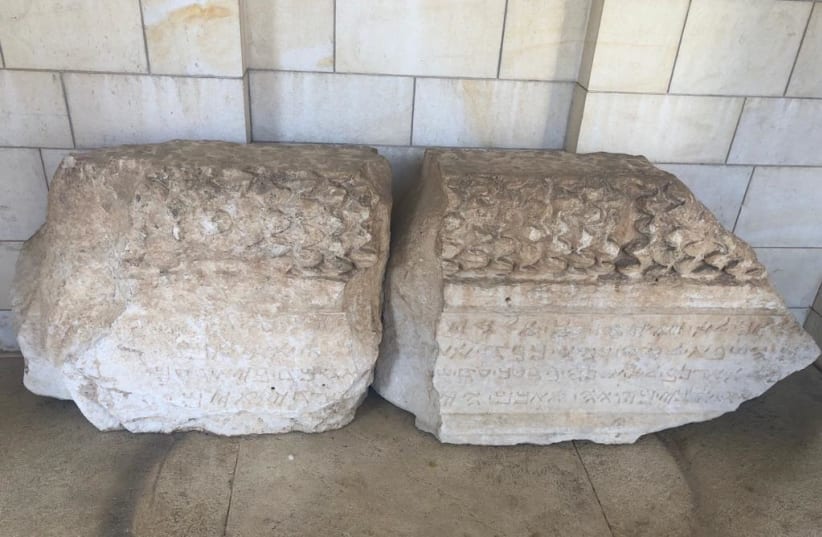Jeffrey Kloha, Chief Curatorial Officer at the Museum of the Bible, equates the field of archeology to puzzle making.
“We have a few pieces and sometimes the pieces fit and make sense, but we still don’t have the entire picture,” he said Thursday.
Kloha was in Israel this past week representing the Washington, D.C.-based museum and holding meetings about future exhibits. The Museum of the Bible opened in 2017 and describes its purpose as to offer visitors “an immersive and personalized experience with the Bible and its ongoing impact on the world around us.”
It hosts artifacts going back as far as 4,000 years and has partnerships in Israel with organizations like the Israel Antiquities Authority and the Bible Lands Museum, as well as with the Vatican, the Greek Orthodox Church in Constantinople and others.
“The museum is a great opportunity to show the broad impact of the Bible around the world and to bring people together around their shared heritage,” Kloha told The Jerusalem Post.
But he admitted that sometimes biblical archeology – the study of biblical sites and artifacts – can be controversial.
“Whenever something new is found or that does not fit the puzzle, we have to be careful before making big claims,” he said. “But it is still very intriguing.”
He said that the museum focuses on the history and stories of the Bible and what they mean. As such, “archeology helps us understand the context of those stories and how they unfolded, why some things happened the way they did.”
For example, it says in the Bible that the Assyrians or the Babylonians came to Israel. “We have arrowheads from the Assyrians and Babylonians and remarkably they match up in broad strokes with what is described in the Bible. Being able to understand the Bible better through archeology is a valuable resource.
"Archeology helps us interpret the Bible and vice versa; they both lend insight into understanding the other,” he said.
For Americans who visit the museum in D.C., biblical findings can be even more exciting.
“America is very new. There is nothing old in America,” Kloha said. “So, to have objects 500, 2,000 or 3,000 years old is pretty unusual in the US. And how those connected to the Bible are very meaningful for guests at the museum.”
He said, “our archeology exhibits are very popular across a broad audience.”
At the center of biblical archeology, he said, are the finds coming out of the Jewish State, what Kloha referred to as “the center of so many ancient civilizations.”
“People of different cultures have lived here for centuries and centuries and interacted together – sometimes peacefully and sometimes not,” he said. “There are so much biblical and other histories that occur here.”
What is the next exciting exhibit expected at the museum?
Kloha said the museum is preparing to launch an exhibit in September on the life, culture and history of the Samaritans created in partnership with Dr. Steven Fine of Yeshiva University. He said that the Samaritans are a community with deep connections to the Bible who have survived for over 2,000 years.
The exhibit will assemble paintings, manuscripts, books, photography, ritual objects and significant archaeological discoveries from Greece, Italy and Israel – among them a nearly two-ton Bet Al-ma inscription stone from the Israel Museum.
“There are always new finds that highlight and bring to the light the biblical narrative,” Kloha concluded.
